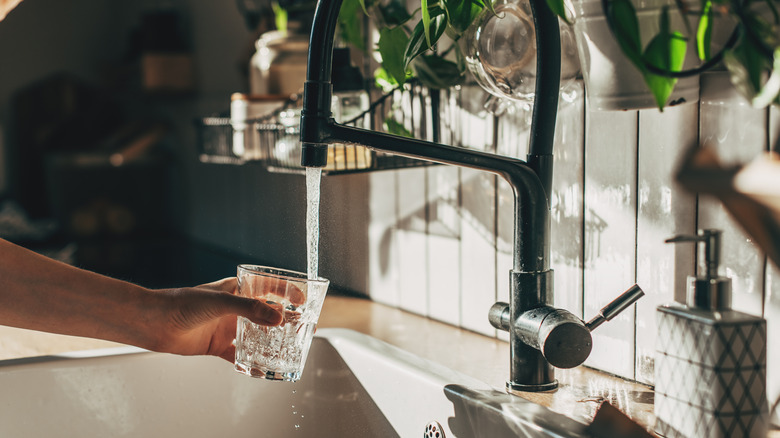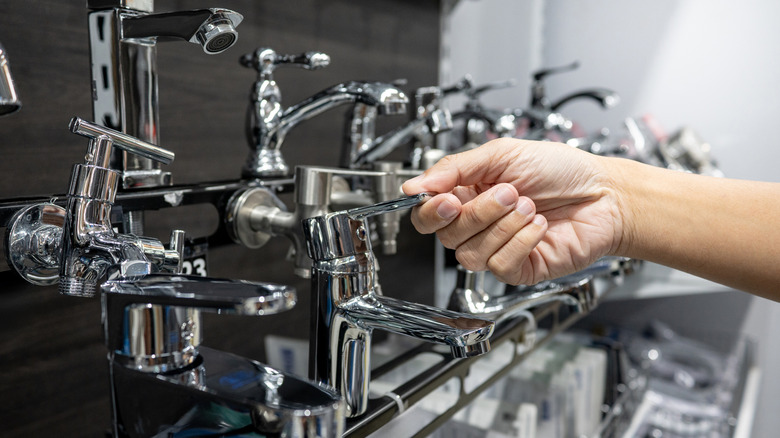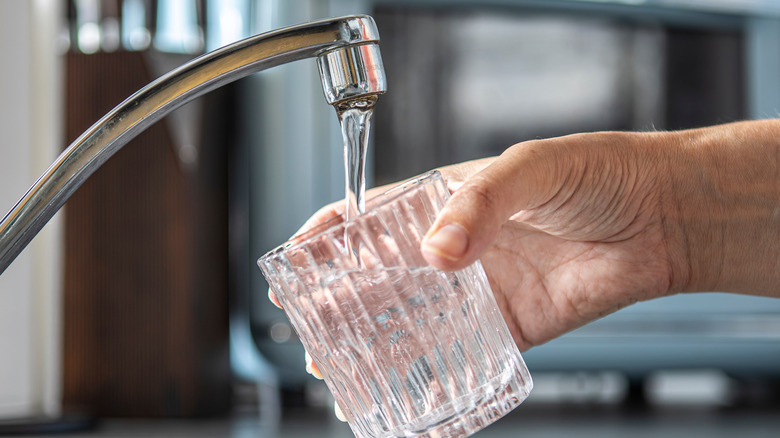The Unexpected Reason To Avoid Buying A Sink Faucet On Amazon At All Costs
The U.S. Consumer Product Safety Commission (CPSC) has released a list of kitchen and bathroom faucets sold on Amazon that it says can expose children and pregnant women to dangerous levels of lead. All of the faucets — the nine on the CPSC's list and another that was voluntarily recalled for the same reasons — are made in China, and many are manufactured by companies currently offering other kitchen, bathroom sink, and tub/shower fixtures.
According to the CPSC, ingesting lead can lead to neurological issues like behavioral problems and poor cognitive performance. The effect is most pronounced in infants, young children, and pregnant women, and research indicates that higher blood lead levels are related to lower IQs and other problems, leading some consumers to look for effective ways to purify household water and eliminate harmful toxins. There is no safe level of lead in the blood, and the German Human Biomonitoring Commission asserts that any level of lead in children's blood will lead to cognitive deficits. As a result, the EPA has set a goal of completely removing lead from drinking water.
The CPSC's urgency is unmistakable. The agency advises consumers to "stop using and dispose of these faucets immediately." Eight of the 10 brands were also "found to leach other contaminants," according to CPSC reports. The list of faucets warned against by the CPSC is inconsistent and includes an unspecified number of un-recalled faucets and about 103,000 units recalled for the risk of lead ingestion.
The faucets you should dispose of, and definitely not buy
For the manufacturers who issued recalls, the CPSC only mentions the single faucet models that were recalled, but for the brands that haven't agreed to an acceptable recall, the language implicates all of the brands' faucets. The agency isn't clear about what was actually tested and what wasn't, so consumers might choose to approach all of these brands with caution. While all of the products specifically mentioned by the CPSC have been removed from Amazon, some are still available on individual brand websites, some are listed on Wayfair, and most can be found on eBay.
All VESLA HOME kitchen faucets, KZH bathroom faucets, CEINOL bathroom faucets, Rainsworth bathroom faucets, NICTIE bathroom faucets, HGN kitchen faucets, and Qomolangma kitchen faucets are implicated by the CPSC's language and are no longer available from Amazon. Meanwhile, a KICIMPRO brand kitchen faucet, a VFAUOSIT brand kitchen Faucet, and a BASDEHEN brand kitchen faucet were all recalled.
Interestingly, three brands still offer very similar kitchen faucets on Amazon: KICIMPRO sells other models very similar to the recalled faucet but with different model numbers on Amazon; VFAUOSIT's recalled faucet is offered on Amazon in other finishes not specified by the recall; as well as a replacement head with the same finish as the recalled faucet is available; and BASDEHEN still offers what appears to be the same faucet in the same finish, but with different-colored spout springs; as well as a number of bathroom faucets. Note that some of the same brands still offer tub and shower fixtures that presumably have not tested positive for lead or other contaminants.
How to minimize your exposure to lead in drinking water
Fortunately, there are ways to mitigate the risk of lead ingestion, even while using faucets that might release lead and other contaminants into drinking water. For consumers who can't immediately stop using bathroom or kitchen faucets, the CPSC recommends that households "only consume water from the faucets after running the water for 15 seconds." This reduces the contact that drinking water has with faucet components that might leach lead.
More specifically, the agency says that consumers should run faucets for 15 seconds at the beginning of each day, the end of each day, and every six hours if the tap hasn't been used. You should also clean or replace the aerator screen in faucets on a regular schedule, according to the CPSC. The Centers for Disease Control suggests that, because warm or hot tap water is more likely to contain higher levels of lead, only drink or cook with cold tap water. The CPSC adds that baby formula should only be prepared with cold tap water, and notes that boiling water does nothing to reduce lead levels in that water.
When shopping for faucets, look for models that comply with NSF/ANSI Standard 61, which is designed to minimize chemical (including lead) exposure from components that come into contact with consumers' drinking water supply. Remember, lead can come from other plumbing system components like service lines, galvanized iron pipes, and plumbing that is installed using lead-based solder, too. Lead can also come from dishware like thrifted mugs, and lead can even be found in collectibles like vintage McDonald's drinking glasses.


